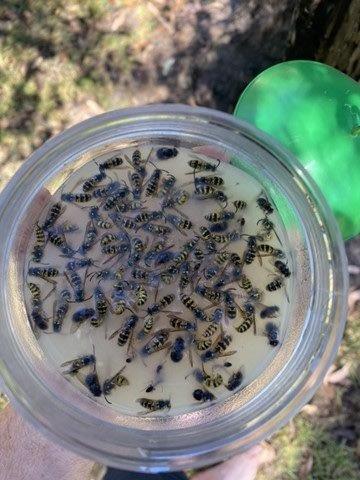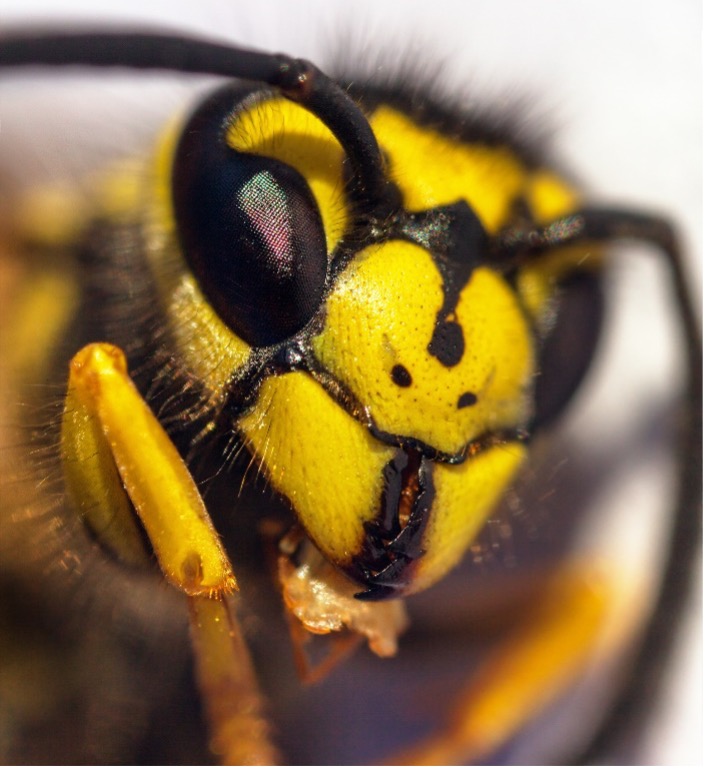The European Wasp, Vespula germanica, is an insect pest that was accidentally introduced into Tasmania in 1959 and has since spread into mainland Australia. As a species that usually thrives in the cool or temperate conditions in Europe, it has established in South Australia and the eastern states as far north as Maitland in New South Wales.
It can also be found in southern Western Australia, where numbers are kept to a minimum through surveillance and eradication programs. The pest is unsuited to very hot or tropical conditions, and it does not appear to have been established in Queensland or the Northern Territory.
How to identify European Wasps?
European Wasps are 12-17mm long with a bright yellow and black body with black triangular markings on the abdomen and often with small black dots on either side. They also have black antennae and yellow legs.
They can look superficially like other wasp species, bees and even some flies, so it is important to be sure of the species before taking action to try to control them. More information to help you determine whether you have European Wasps can be found in our European Wasp Identification Guide.
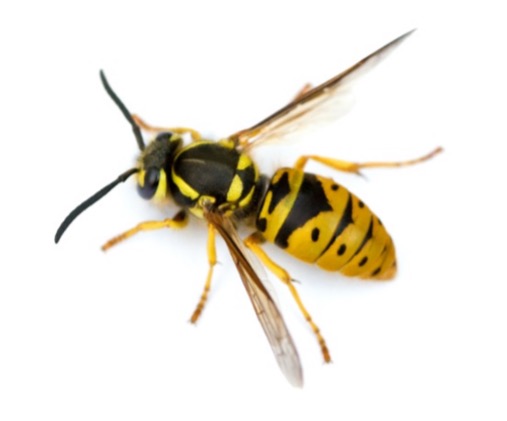
Why is the European wasp a pest?
European Wasps are attracted to the smell of barbecues and sweet drinks, so they become unwelcome guests at picnics, sausage sizzles and any outdoor eating situations. This puts them in close contact with people and creates a risk of dangerous stings.
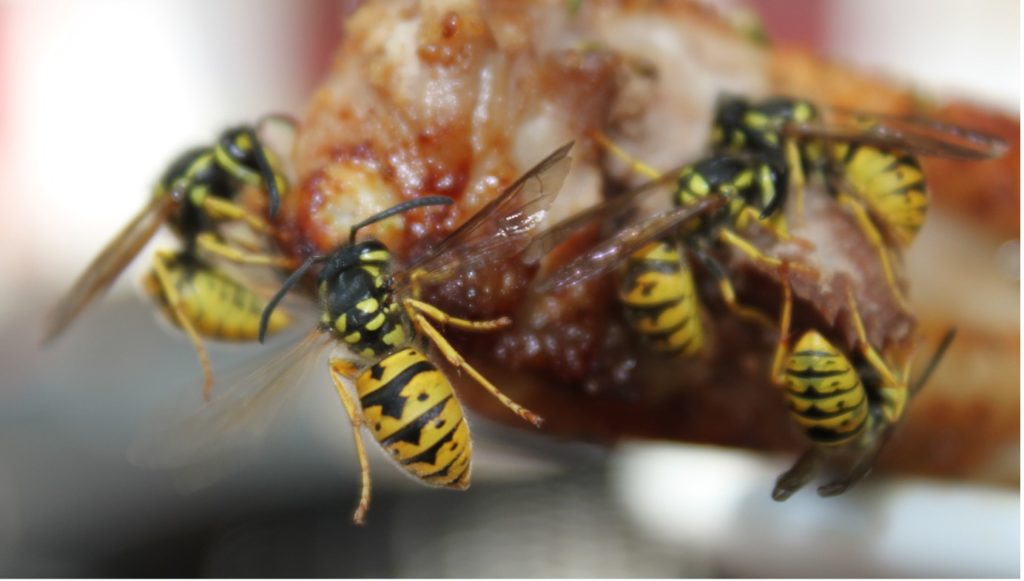
Other wasps and similar looking insects have different diets and do not tend to invade our eating spaces. If you are experiencing wasps attempting to feed at your table, barbecue or pet food, chances are that you have European Wasps.
European Wasps tend to build their nests underground, and the entrance is not always obvious. If a European Wasp nest is inadvertently disturbed, for example by the slashing or mowing of long grass, guard wasps call on their nestmates to collectively attack. As wasps can sting more than once, this can lead to serious, and sometimes fatal, sting reactions.
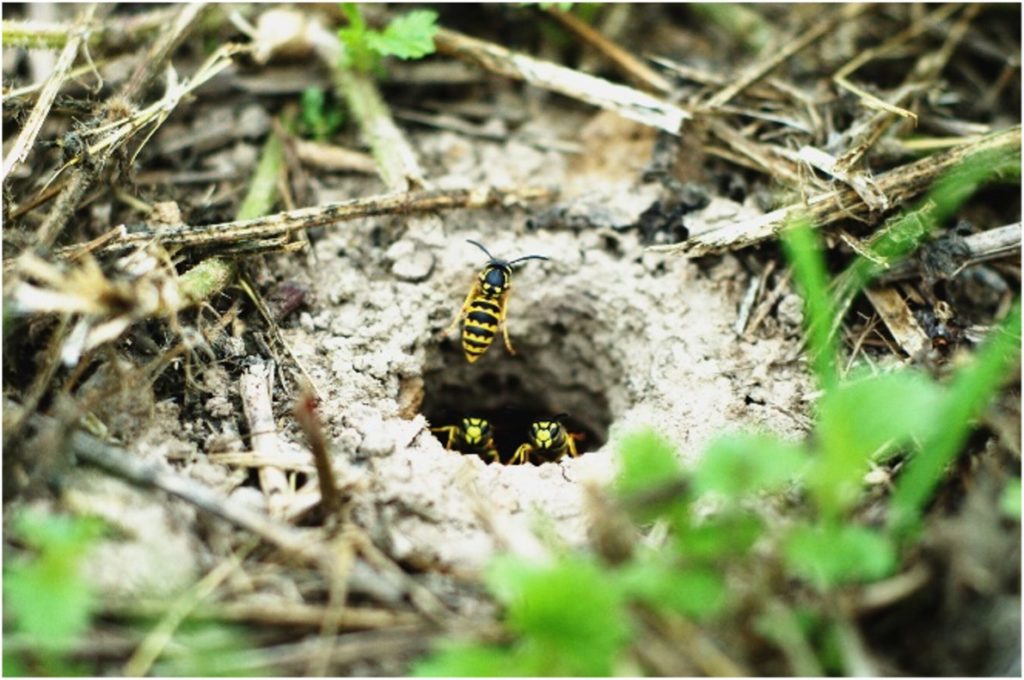
In their native range, very cold winters cause nests to die out and new nests are established each spring by a young queen. This keeps nests relatively small and acts as a natural form of population control. However, in Australia, where winters are generally less harsh, queens can sometimes continue to reproduce in nests over winter, causing the establishment of so-called “super nests” with multiple queens and many thousands of wasps.
The ability to create larger nests, and the lack of natural predators in Australia, can lead to European Wasp populations having a negative impact on native invertebrate species. They are generalist predators which means they have a broad diet and compete with native predators for food. They increase the predator pressure on our native spiders, flies and moths and have been known to attack bee-hives and weaken bee colonies.
What can I do if I have European Wasps in my backyard?
If you know where the European wasp nest is and can have it safely destroyed, that will be the most effective means of controlling the number of wasps in that area. However, if the location of the nest is unknown, trapping the foragers that feed the young in the nest is the next best thing.
The EnviroSafe European Wasp Trap and Bait can be a convenient solution to annoying European Wasp foragers that find their way to your outdoor eating area. This Australian-made product has been developed and tested under Australian conditions and is highly attractive to European Wasps foraging for food.
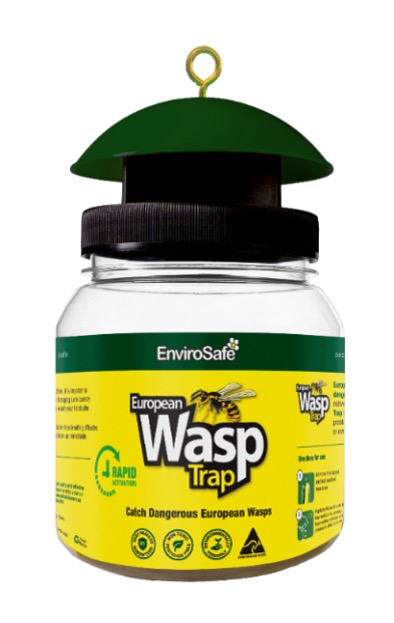
Setting up the EnviroSafe European Wasp Trap is simple – just add water to the bait and hang the trap where you see the wasps. The bait activates instantly, so set the trap when wasps are inactive, either early in the morning or late in the evening.
Don’t worry if you don’t catch all of the wasps you see – as social insects they divide their tasks among the members of the colony and those foraging for water or nesting materials may not notice the trap.
However, the wasps that are looking for food to take back to feed the young in the nest – and these are the wasps that cause the problem at the table or barbecue – these wasps will be strongly attracted to the bait and caught in the trap. This is a great way of stopping wasps from spoiling your enjoyment of your outdoor eating area.
